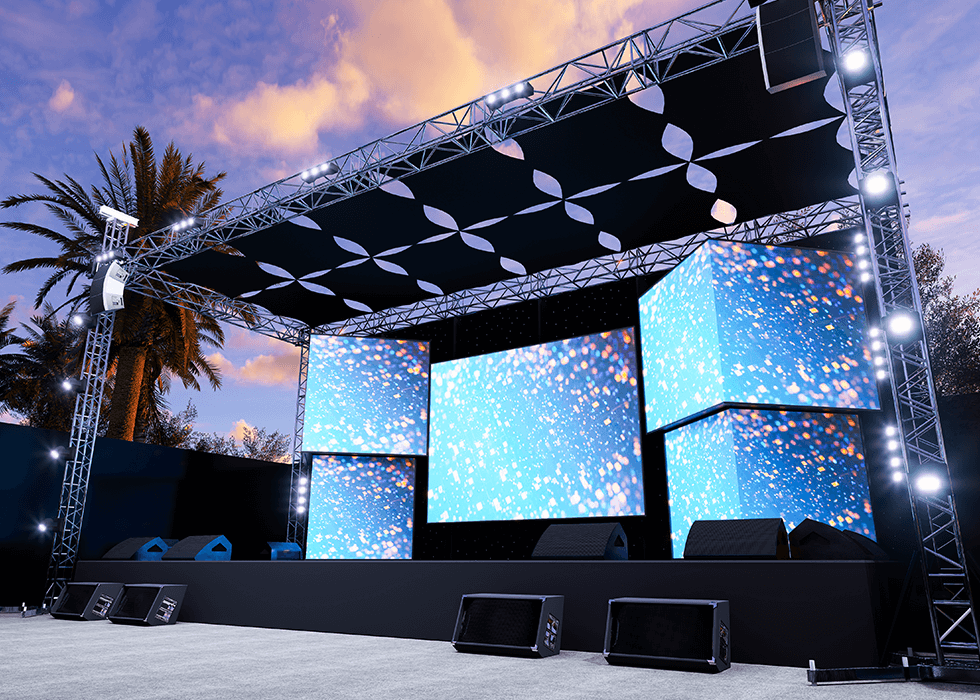News & Trends
AV / IT Convergence: Skills and Gaps to Breach?
 I wrote my first article on this topic just before the turn of the century, on the (then) growing need to converge AV and IT.
Yes, that long ago! It seemed back then (and perhaps even today) that AV people were in one camp and IT people in another… and never the twain shall meet. Suffice it to say today, AV and IT have converged at some level. I do suggest that
while AV and IT frequently work in unison at the infrastructure level, they have not truly completely converged and may never fully do so. They are certainly parallel to one another with varying amounts of overlap. The point is that they are distinct
in their work processes. Let's begin by looking at this distinction.
I wrote my first article on this topic just before the turn of the century, on the (then) growing need to converge AV and IT.
Yes, that long ago! It seemed back then (and perhaps even today) that AV people were in one camp and IT people in another… and never the twain shall meet. Suffice it to say today, AV and IT have converged at some level. I do suggest that
while AV and IT frequently work in unison at the infrastructure level, they have not truly completely converged and may never fully do so. They are certainly parallel to one another with varying amounts of overlap. The point is that they are distinct
in their work processes. Let's begin by looking at this distinction.
Historically the pro AV industry has focused on technologies, products, and systems. Its mandate is creating, transporting, displaying, collaborating, and communicating information to the intended audience. AV integration aims to give clients a full range of solutions from which to pick and then make the operation and communication of audio and video seamless. Since the early 2000s, the commercial AV industry has been driven by expanding communications, sharing of data, and introducing collaboration and interactivity, both internally and externally. This is where IT comes into the picture.
The Harvard Business Review introduced the term IT (for information technology) to make a distinction between purpose-built computers designed to perform limited functions, and general-purpose computing machines that could be programmed for various tasks. One IT subject matter expert suggests an inclusive definition; “Information technology is the use of computers, storage, networking and other physical devices, infrastructure, and processes to create, process, store, secure and exchange all forms of electronic data.”
IT now embraces an array of technologies and related disciplines. The foundation of IT is still basic computer-based information systems, including computing hardware, operating systems, application software, and the data that is processed to produce useful information. Over time, each of these IT components and functions has become more complex, embracing ever-growing subsets of technologies and methodologies. IT no longer just happens locally; cloud computing environments now complement and even replace on-premises resources of the traditional data center. All these developments have made IT more complex and require greater specialization and new roles and responsibilities from the IT workforce.
IT creates, manages, and services the backbone of where AV often exists. To me, the most appropriate way to look at the relationship between IT and AV is one of symbiosis. Of course, some IT people can take on AV-centric projects, and AV people are familiar with IT, but the work processes and responsibilities are different. Without fear of contradiction, what can truly be said is that IT and AV are codependent.
What I can safely say is that out of necessity, is that we are still speaking and writing about AV and IT convergence today. I was speaking to my partner about this and what popped into my mind was an analogy to the old Brady Bunch TV series. You had two distinct families with individual histories but when the parents married the families had to find ways to work it all out. If you don’t get it, just do a search for the old TV show and you will.
When people used to think about convergence it was almost like mixing black paint and white paint. The black and white would each go away leaving a “new” color we call grey. Continuing the paint analogy to AV and IT there is still some black on one side and white on the other side but there is (growing) grey in the middle. This is the convergence of AV and IT. AV is distinct from IT in most ways and vice versa. So, no, AV and IT are not “fully” converged and probably will never totally be… but there is convergence. This begs the question of what is driving these distinct “camps” to work together and yes, converge.
It is clear to me that the biggest driving force is unified communications and collaboration (UCC). This is the “grey paint” in the middle (aka. convergence) with black on one end and white on the other. From another perspective this is where the internet of things (IoT) is so relevant. If you read into that as a convergence of many more devices than we previously would have had to network before… then you get the point. One definition of IoT is a network of physical devices that are embedded with sensors, software, and other technologies for the purpose of connecting and exchanging data with other devices and systems over the internet. A noted university explains it this way, “An IoT system consists of smart devices that use embedded systems, such as processors, sensors, and communication hardware, to collect, send and act on data they acquire from their environments. IoT hardware shares the collected sensor data by connecting to an IoT gateway where data is either sent to the cloud to be analyzed or analyzed locally. Sometimes, these devices communicate with other related devices and act on the information they get from one another.” As one subject matter expert opines, “The devices do most of the work without human intervention, although people can interact with the devices - for instance, to set them up, give them instructions or access the data.”
Obviously, the emergence of IoT and UCC can directly speak to both AV and IT but the “pipeline” that feeds all of this is big data. I won’t belabor the point but the sheer amount of information available and increasing daily is overwhelming and the responsibility to manage and protect this is a daunting task that falls at the feet of the IT department. This is where the elements of IT come into play with their dedicated devices and software that supports what comes in, is distributed, and goes out. Security in and out takes on a new meaning.
This is what we might call an ever-evolving environment for both AV and IT and requires a new look at skill sets that are evolving as well. Are there skills gaps in both camps that will strengthen the “grey” in the middle we call convergence? The answer is yes and no. I will try to explain.
I suggest the following as a self-explanatory list of “soft skills” that might be required for both AV and IT.
- Communication
- Organization
- Analytical abilities
- Creativity
- Project management
- Tenacity
- Problem-solving
- Resourcefulness
- Leadership
- Flexibility
The “hard skills” on the IT side subject matter experts tell me might include most or all of the following:
- Operating system knowledge
- Network configuration
- Cloud computing
- Hardware deployment
- Database management
- Technical writing
- Data and social media analysis and management
- Coding
The “hard skills” on the AV side are just as diverse and might include most or all of the following:
- AV systems design
- Audio hardware knowledge
- Video hardware knowledge
- AV control systems
- AV software
- AV communication and proposals
- AV project management
- AV integration
- Basic troubleshooting
- End user training
- AV services and maintenance
Neither list of “hard skills” is inclusive of all potential skills… and as they say your application may vary, but these are the basics that are most likely to apply. This brings up the questions of convergence and what each needs to know about the other. Well, the “perfect” candidate would be someone who is CTS and Cisco certified. The good news is that some will do that... and rest assured there is a job for you! However, perfect should not be the enemy of good enough, so at a minimum each should know about the other at a cursory level.
At the 30,000-foot level the IT folks are afraid that some things (or anything for that matter) on “their” network will bring it crashing down around their ears or create an operation glitch or a security leak that becomes a nightmare. On the AV side there is a tendency to oversimplify networks. The IT folks appear to be impediments to their progress in systems designs and integration as they add IoT capable gear to nearly every design they work on. The answer to these challenges is for each to become familiar with the other. This is not to say that all IT folks need to become experts in AV nor vice versa. They each have a full plate, but it behooves the AV folks to formally work with IT and again vice versa to familiarize each other with responsibilities and challenges they might individually and mutually face. As Steven Covey says in his book The 7 Habits of Highly Effective People, “Seek First to Understand, Then to Be Understood”. Suffice it to say learning about each other and building mutual respect pays off in spades and adds collaboration to the AV and IT relationship. Not “either / or” but rather “and” resulting in win/win for AV, IT, and end users.















